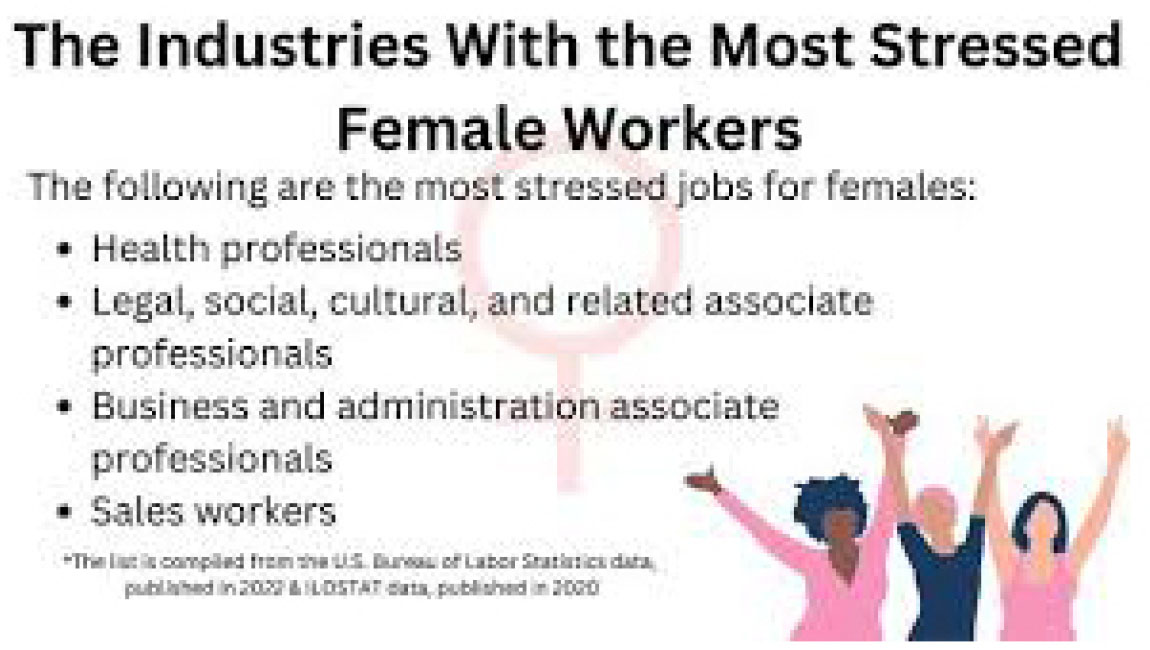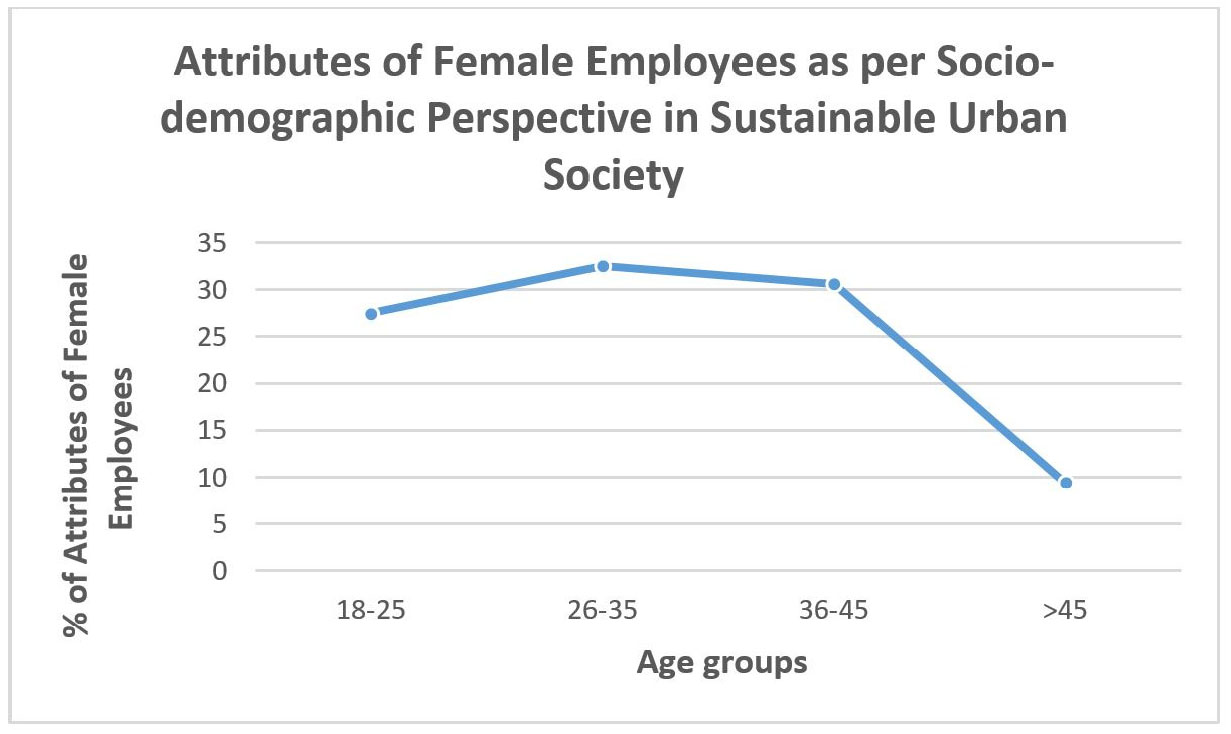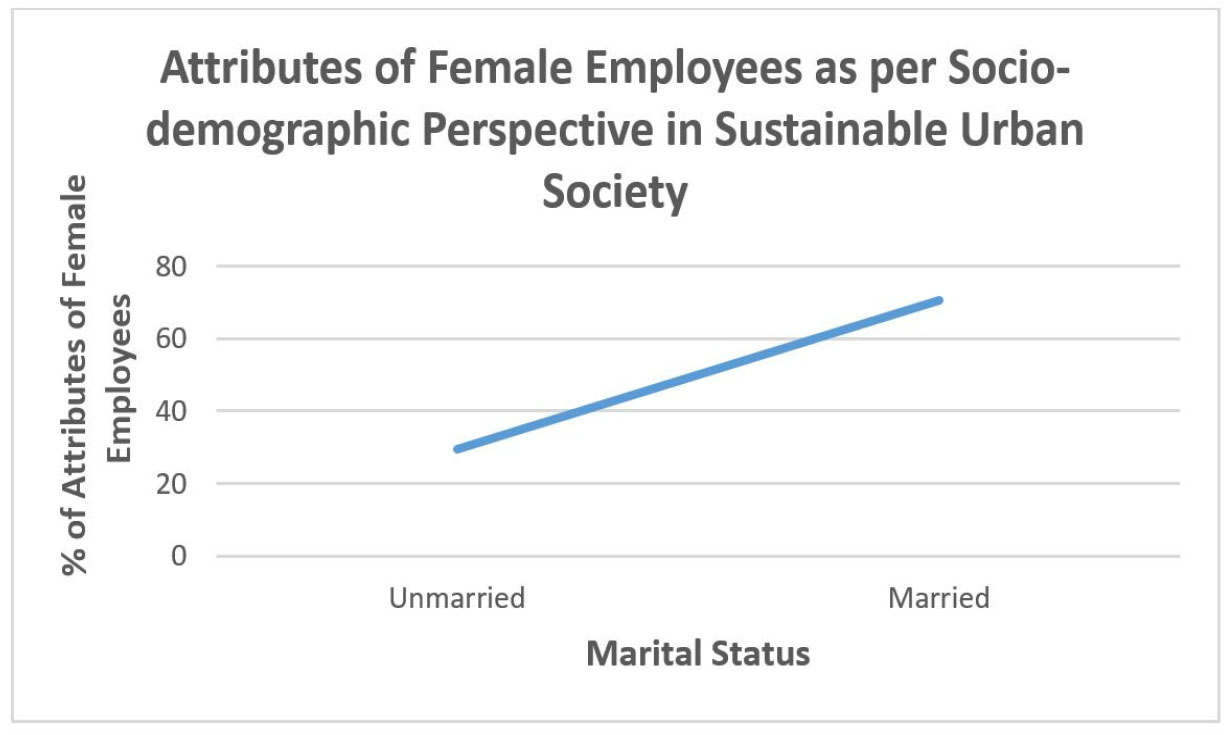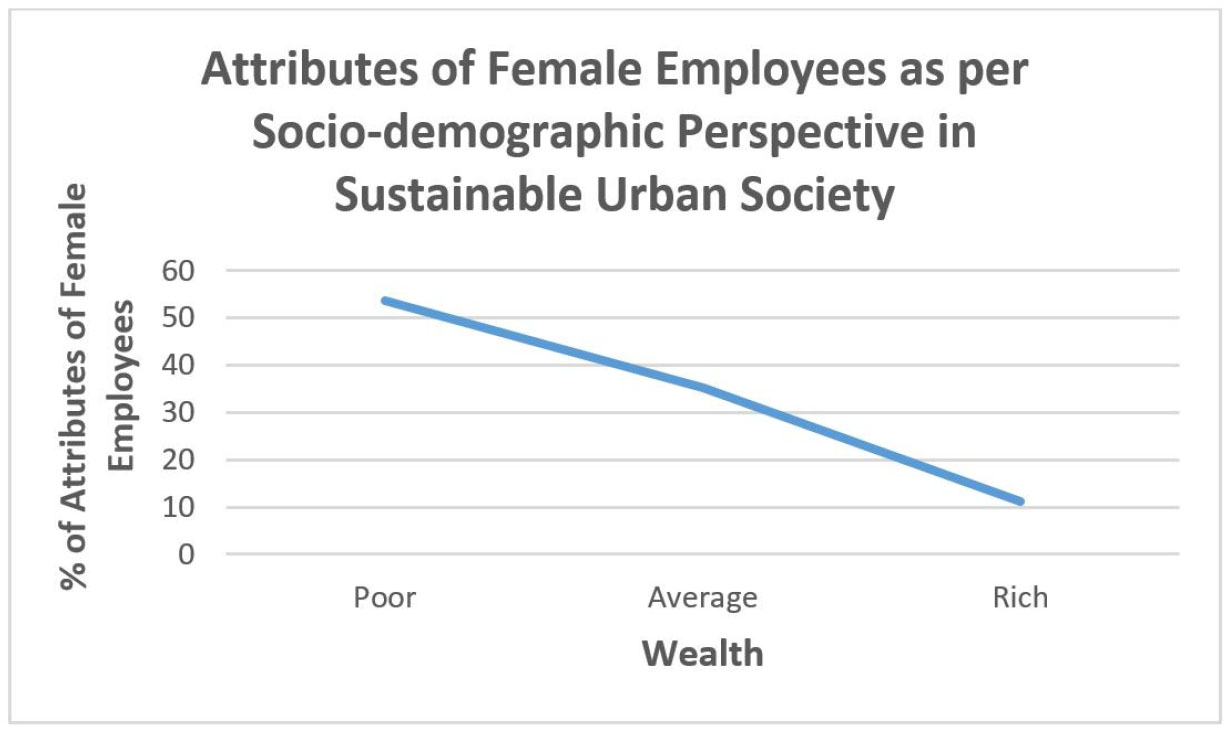Introduction
Objectives
Motivation and contribution
Material and Methods
Study Period and Design Study Environment
Gathering Data and Accumulation
Data Analysis
Results Analysis
Attributes of Female Employees as per Socio-demographic Perspective
Administrative and work-related aspects of female employees as a whole
Factors that affect female employees’ levels of stress at work
Discussions
Management strategies for reducing stress at work
Conclusion and Future Work
Introduction
The development of sustainable urban societies is fundamentally depending upon the working atmosphere, lifestyle and health facilities in urban area. Due to increase in global economic competition, the life of workers working in the industries have been overloaded which has caused many impacts upon the society [1, 2]. Workplace stress is a troubling health issue that needs to be taken seriously by taking the proper precautions because it could have major socioeconomic repercussions [1, 2]. The WHO defines workplace stress as the response that employees display when workload and pressure don’t match their ability and skills, which puts them in a stressful situation. The setting in which workers are employed has a negative impact on the physical and mental health of those workers [3]. Stress at work significantly increases sickness rates in developing nations due to the negative effects it has on workers’ emotional, mental, and overall wellbeing.
In order to compete, both employees and employers in the business world have started to disregard the impacts of workplace stress in their daily lives. For perhaps the first time, Selye (1936) inscribed about working stress and its physiological and psychological reactions to unfavourable situations or influences [4]. He asserts that the concept of stress predates the development of human civilisation. The Latin term “Stringere,” which denotes limitation or going beyond human potential, is the root of the English word “stress.” In their studies on job stressors, Newman and Beehr (1979) [5] described it as a circumstance in which pressure from the job causes the employee to deviate from proper function due to his or her shifting mental state. Later, Loghan et al. (2005) [6] looked at stress by way of a stimulus-response to the employee’s talents and restrained needs. Researchers have found that organisational work culture has an impact on how stress develops since sources of stress depend on how things are done there [7].
In overall, stress can be used to characterise the anxiety among people experience in life, whether it comes from the family or job environment [8, 9]. However, it has been found that a definite degree of occupational stress increases output and efficacy, indicating that not all stresses in the workplace are bad [10, 11, 12, 13, 14, 15, 16, 17, 18, 19, 20, 21, 22]. Numerous academics have previously stated that factors in the workplace, for example, the landscape of the job and the socio-cultural changing aspects of the organisation, have a variety of effects on employees’ levels of stress and how severe it is [11]. Employees in the paper industry were affected by factors such as shifting or modifying their work schedules [12], drinking and other drug usage [13], social support [14, 15], their occupation, and their age [16, 17, 18, 19, 20, 21, 22, 23, 24, 25, 26, 27, 28, 29, 30]. Researchers are deeply concerned about work-oriented stress and its effects on employees, but there is little information available about the strictness and contributing variables of work-oriented stress experienced by women working in paper mills. Our goal in the current study was to learn more about the effects of workplace stress on women employees, as well as its associated causes and management methods in the Ludhiana paper sector. Further, Figure 1 and Figure 2 show the glimpse of the most stressed female workers and stress assessment tools in sustainable urban areas for different scenarios.

Figure 1.
Scenario-1: most stressed female workers and stress assessment tools in sustainable urban areas [3].

Figure 2.
Scenario-2: most stressed female workers and stress assessment tools in sustainable urban areas [3].
Objectives
This study, which was conducted in the industries present in Tier 2 cities in India, was crucial because it closes a significant gap in the body of current literature, which frequently ignores the particular setting of Tier 2 cities. The infrastructure and socioeconomic dynamics of Tier 2 cities differ from those of metropolises, and this might have a noticeable impact on working women’s performance and stress levels. This study is important because it focuses on sustainable urban regions, where it is important to strike a balance between development and well-being. By providing insights into these locations, more sophisticated and locally-specific interventions to help women in the workforce may be possible.
Motivation and contribution
The need to comprehend and reduce work-related stress amongst working women in sustainable urban areas is the driving force behind this research, which also seeks to identify the underlying factors affecting their productivity. Its goal is to provide information for practices and policies that promote women’s mental health at work, which will ultimately increase their contribution to the urban economy and promote a more fair and sustainable urban future.
The rest of the paper is organized as below: section 2 discusses the materials and methods. Section 3 and 4 is about the results analysis, and analysis, respectively. Finally, section 5 come up with the conclusion and future work of the present research study.
Material and Methods
This section further discusses the design study environment and data gathering and analysis.
Study Period and Design Study Environment
Among the most important industrial cities in Punjab, India, is Ludhiana, where the study was carried out. Three specifically chosen paper companies, Trident Limited, JK Paper Mills, and Nahar Paper and Board Mills Pvt. Ltd, were located in Industrial area of Ludhiana, and had roughly 320, 260, and 310 individuals working there. Trident and JK paper mills mainly dealing with all type of paper sheets and notebook printing and they are distributing their goods to international and domestic markets whereas Nahar Group of Industries is dealing with packing cardboard services where they supply their goods to big textiles industries of Ludhiana i.e., Vardhman and Oswal industries.
Gathering Data and Accumulation
Women employees of certain paper manufacturing were direct questioned for the current study using a questionnaire developed by Etefa et al. (2018) [17], and Karasek et al. (1998) [18]. The questionnaire was created to evaluate each necessary characteristic, including stress connected to the workplace, organisational, socioeconomic, physical, and psychological factors. Inquiries about work-related stress and its effects were made of 100 female employees from each of the chosen industries. Between the months of July 2021 and June 2021, the survey was conducted. There were 360 participants in the entire sample [30, 31, 32, 33, 34, 35, 36, 37, 38, 39, 40, 41, 42].
Data Analysis
To determine the link among each parameter and its output variable, bivariate and multivariate analysis via Binary Logistics Regression was performed. In accordance with Bendel and Afifi, 1977 [19], Hosmer-Lemeshow statistics were performed for goodness of fit (P>0.05). The course and statistical correlation between several elements and work-oriented stress were resolute by odds ratios with 95% confidence intervals (P<0.05 considered relevant in this investigation) [42, 43, 44, 45, 46, 47, 48, 49, 50, 51, 52, 53, 54, 55, 56, 57, 58, 59]. Table 1 shows the attributes of female employees as per socio-demographic perspective in sustainable urban society. Further, Figures 3, 4 and 5 shows the % of Attributes of Female Employees as per Socio-demographic Perspective in Sustainable Urban Society: for different age group, marital status and Wealth.
Table 1.
Attributes of Female Employees as per Socio-demographic Perspective in Sustainable Urban Society
Results Analysis
Attributes of Female Employees as per Socio-demographic Perspective
A total 360 respondents have been participated in this survey. Table 1 indicates the basic statistics of the participants where about 60% women has age of less than 35, 71% married, 54% poor, 11% rich, 65% staying with family, 81% of women were employed on temporary basis. Further, Table 2 tabulated the administrative and work-related aspects of female employees as a whole in sustainable urban society.
Table 2.
Administrative and work-related aspects of female employees as a whole in sustainable urban society
Administrative and work-related aspects of female employees as a whole
Amongst 360 employees who addressed the several work oriented stress at their place of employment, 156 (43%) reported uncomfortable working environment, 144 (40%) inappropriate organisational support, 248 (69%) worried due to unsatisfactory salary offered, 107 (30%) employees who experienced workplace violence, 282 (78%) employees who reported poor job security, 132 (37%) employees who experienced injury at workplace, and 288 (80%) employee denied safety and health facilities offered inside the factory (Table 2).
Factors that affect female employees’ levels of stress at work
Table 3 lists the findings from bivariate and multivariate analysis for relationships to work oriented stress. The following were significantly correlated with work-oriented stress: workplace violence, social support, shifts in working hours, wage satisfaction, monthly hours worked in excess of the standard, industrial accidents, and organisation support (Table 3). Rotating work schedules and fewer social supports were revealed to be statically important in the multivariate analysis of work-oriented stress in respect to all the factors. Comparing rotating individuals to their counterparts, the odds of work-oriented stress were two times higher for shifting staffs (adjusted odds ratio=2.37, 95% CI=1.41-3.41). In comparison to strong social support, lower social support has more risk factors for work-oriented stress (adjusted odds ratio =3.71, 95% CI=2.92-5.12), as does intermediate social support (AOR=3.11, 95% CI=1.81-4.92). Also, when compared with salary satisfied working women, unsatisfied women had more working stress (Adjusted odds ratio=2.57, 95% CI=1.32-2.97).
Table 3.
Factors that affect female employees’ levels of stress at work
Discussions
In the current study, the total occurrence of work-oriented stress was 47.3% (95% confidence interval CI= 37.2-47.2). The results of this research work are comparable to those of further studies conducted in several other regions of the world, such as West Sussex (43%) [20], Ethiopia (40.4%) [17]. However, it was discovered that work oriented stress was lower in comparison to our study in the Congo (28%) [16], Thailand (27.5%) [21], and Iran (21.3%) [22]. In particular, Bangalore City (26%) and India (25%) in general have low levels of work-related stress, according to Anandi et al. [23] and Mohan et al. [24], respectively. The populace of the study region, the size of the sample, and the techniques utilised for the study could all be contributing factors to these variations in work-related stress across the globe. The likely cause of these variations is that developed countries have better socioeconomic situations, access to health facilities, safety precautions, and frequent training [11, 25]. The current study likewise discovered that operative setting, or working environment, and shifting of working time were both related to work-oriented stress; these findings may be due to the effects of surroundings on employees’ brains. Our findings support previous studies that show shifting workers are more susceptible to work-oriented stress than their counterparts [26], [27]. This is because shifting workers experience more stress because their biological clocks change, which could lead to a variety of psychiatric symptoms. Our findings also showed that low and moderate social support contributed significantly to work-related stress, which has been seen by some other researchers from around the world [21, 28, 29, 30]. Poor social support negatively affects the quality of life for female employees [31, 32, 33]. For women working in the workplace, psychological support from society and the organisation is crucial since it significantly improves their physical and mental health when dealing with stress at work [34].
Management strategies for reducing stress at work
From our research, we identified a few crucial elements for the authority to control work-related stress. Innovative training programmes for working women employees should be organised by management to reduce stress. Industry must put greater emphasis on stress management programmes in order to reduce the tension. The management should recognise its workers for their accomplishments, promote temporary workers to permanent positions, and give periodic appraisals to motivate their workforce. The availability of social and emotional support for working women employees should be increased to reduce stress.
Conclusion and Future Work
The recognition of work-related stress (WRS) as a noteworthy obstacle to the sustainability of society is growing, with a special focus on its impact on female employees. We found that about 47.3% (95% confidence interval CI= 37.2-47.2) of participants reported feeling stressed out at work, which is consistent with worldwide statistics but varies by location. When it comes to workplace stress, people having rotating working hours are 2.37 times more likely to experience it than fixed-working hours workers. Comparing the risk of stress to that of strong support, insufficient and moderate social support are associated with 3.71 and 3.11 times higher risk, respectively. The adjusted odds ratio of 2.57 for salary dissatisfaction among working women highlights the need for supportive work settings as it contributes to higher stress levels. According to our research, a significant percentage of women who work encounter different degrees of WRS. Their susceptibility to work stress is increased by elements including lower earnings, job uncertainty, irregular shifts, and insufficient social support. In the end, this stress might seriously reduce female employees’ productivity and organizational contributions. Therefore, it is essential to monitor work-related stress proactively in order to prevent accidents, stop productivity losses, and lower the expenses of replacing employees who are unable to work because of stress-related problems.
Future developments of this work might include longitudinal research to monitor how work-related stress (WRS) develops over time in female employees across different industries. This would make it possible to investigate the long-term impacts on mental health and work performance as well as the efficacy of various stress-reduction techniques. Furthermore, comparative research in other cultural contexts and economic domains may offer a more thorough comprehension of WRS, resulting in internationally applicable solutions and the creation of global standards for the establishment of supportive work environments. Incorporating technology innovations like artificial intelligence and machine learning can also improve WRS prediction and prevention by customizing interventions to meet the unique needs of each patient and the unique challenges faced by the industry.







